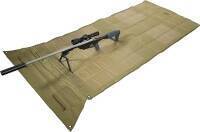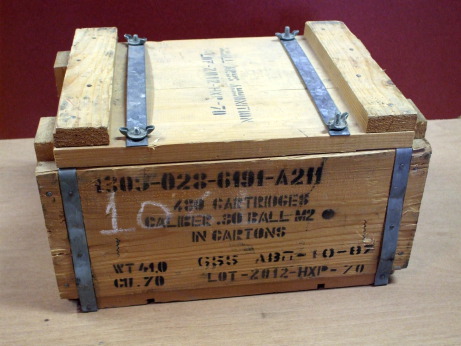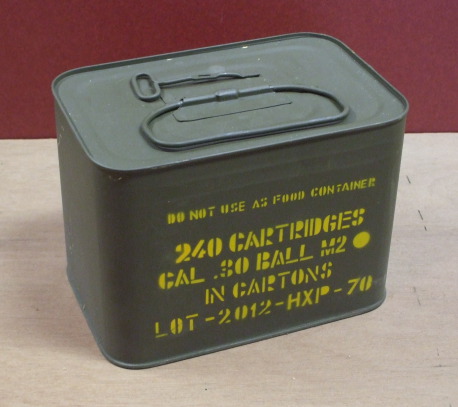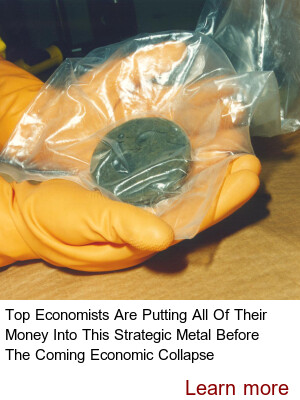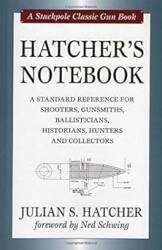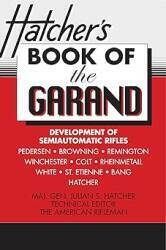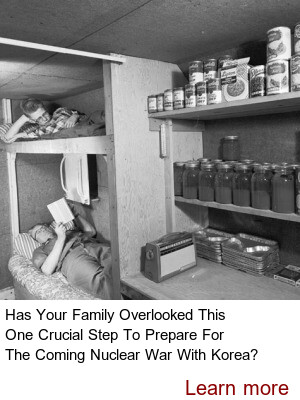
Restoring an M1 Garand Rifle
Ammunition
.30-06 Springfield Ammunition
The M1 Garand rifle fires the Cartridge, Ball, Caliber .30 M2, known to civilians as the .30-06 Springfield cartridge. It's based on the .30-caliber cartridge standardized in 1906 at the Springfield Armory. The 1906 Springfield design represented a number of major trends developments in cartridge and weapon design in that era. A version of it was the U.S. military's main rifle cartridge until the M14 rifle and its 7.62x51mm NATO round was introduced in 1957.
Smokeless powder had replaced black powder in the 1880s. It provided about three times the energy of an equal mass of black powder. That led to higher muzzle velocity, giving a flatter trajectory, greater accuracy, and greater range along with greater kinetic energy.
Surprisingly, it wasn't until 1898 that the French came up with another new development, one that seems obvious in hindsight. Pointed bullets provided better aerodynamics and ballistics.
Those developments required corresponding improvements in metallurgy. The greater power of smokeless powder required strong receivers and barrels. It also required that the bullet's jacket and its binding to the lead core could withstand the rapid acceleration through the rifled barrel. And finally, semi-automatic operation required that the brass ammunition cases first withstand increased chamber pressure and then by yanked from the chamber by the extractor and knocked to the side by the ejector.
The U.S. military went through a series of rifle ammunition designs in the few years around 1900 — U.S. .30-03, 6mm Lee Navy, and .30-40 Krag. The 1906 Springfield design then worked well for 50 years of military service.
The Office of the Director of the Civilian Marksmanship Program or ODCMP used to sell surplus ammunition at Camp Perry, Ohio. They sold M2 Ball .30-06, the standard military issue ammunition for the M1 Garand. Much of it had been returned from Greece.
It's not terribly obvious, but see the lot marking
LOT-****-HXP-** where HXP
is the headstamp code for the
Greek Powder and Cartridge Company of Athens.
The M1 Garand sights are calibrated for the ballistics of the standard M2 Ball round.
You could get it by the case, as seen above. A case of 480 rounds, contained in two 240-round cans.
The wooden crate held two sealed metal cans. Make sure to wear leather gloves while struggling to open the cans! It's fairly easy to open the cans using the attached key. But it's quite difficult to avoid some jagged metal edges while doing so.
This can is also marked with a lot number including the manufacturer code HXP. I would guess "H" for "Hellas", that being Greek for "Greece". But that's just a guess.
An M1 Garand needs en bloc clips to hold the ammunition. The spring steel en bloc clips hold eight rounds each.
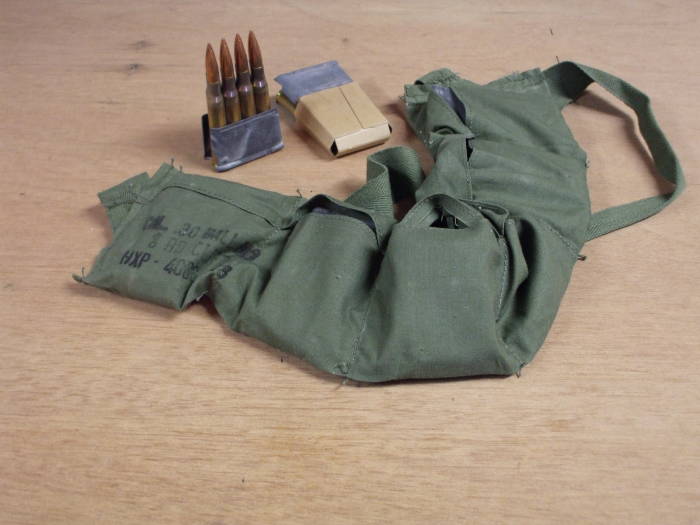
Bandolier holding six en bloc 8-round clips of .30-06 ammunition.
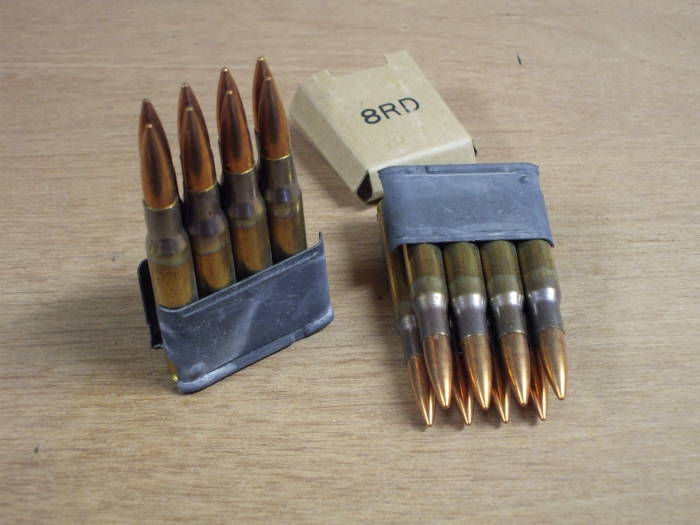
Closer view of two 8-round en bloc clips of .30-06 ammunition.
The CMP imposed a purchasing limit of 10 cans per year in April 2009. That was 192 rounds per can, and so 1,920 rounds per year.
People were buying in panic, buying as much as they could pack into their overloaded vehicles.
Within about a year, the surplus ammunition was all gone.
Now, before moaning that things are suddenly bad right now because of today's politicians, read this excerpt from the article "Reloading for the M1 Rifle" from American Rifleman in March, 1986:
.30 Caliber M2 Specifications from "Hatcher's Notebook"
The following are from pages 35-37 of "Hatcher's Notebook", by Julian S Hatcher, Major General, U.S. Army, retired, The Telegraph Press, 1947.
Notice that the .30 Caliber M2 Ball round as standardized by the U.S. military is not the same as the .30-06 Springfield round. They are very similar, but not exactly the same thing.
I think it would be accurate to say that .30-06 Springfield is a more general category, and the .30 Caliber M2 Ball is one more specific specification.
"Hatcher's Notebook" includes ballistic tables showing slight differences between generic Springfield .30-06 and the M2 and armor-piercing M2. One of those tables is reproduced in the next section.
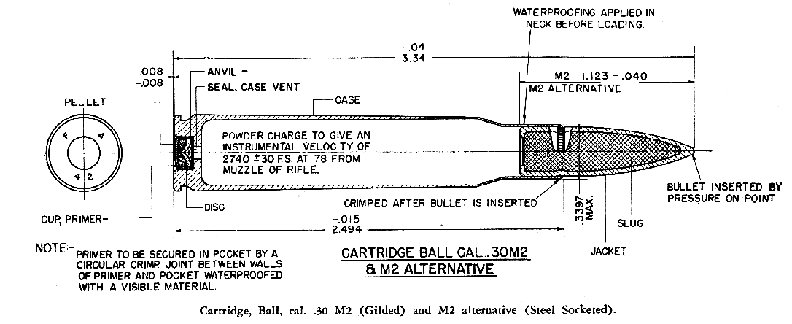
Page 35: Cartridge, Ball, cal .30 M2 (Gilded) and M2 alternative (Steel Socketed).
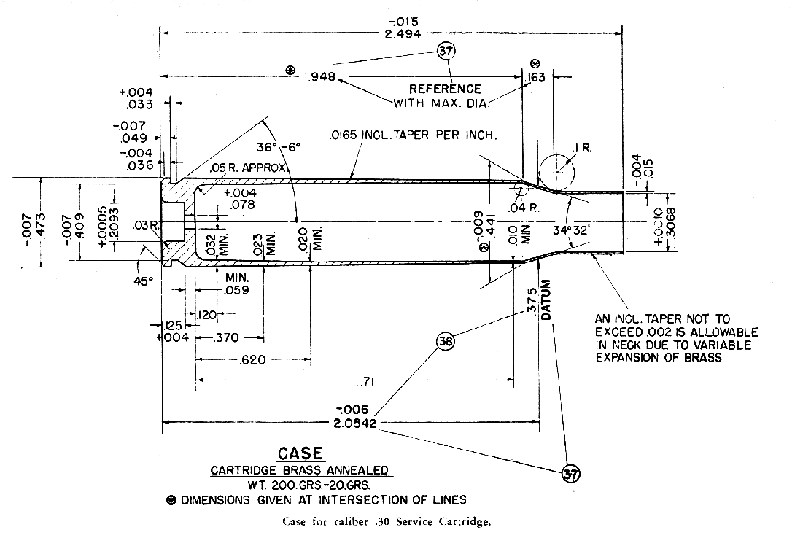
Page 36: Case for caliber .30 Service Cartridge.
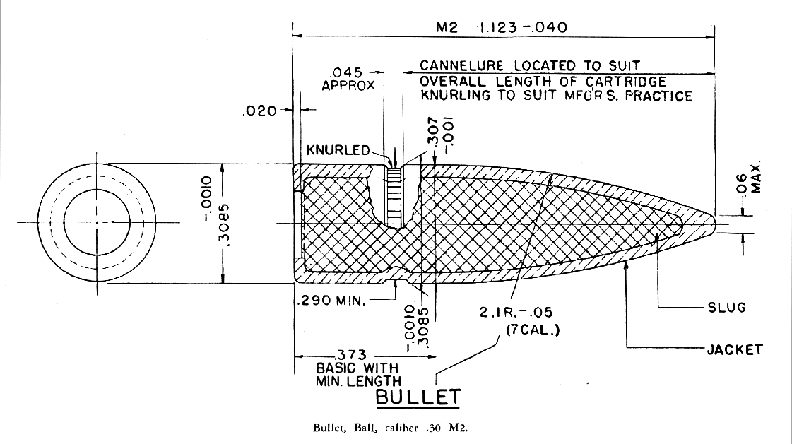
Page 37: Bullet, Ball, caliber .30 M2.
.30 Caliber M2 Ball Ballistic Characteristics
From Hatcher's Notebook, pages 29-30:
| Comparison of the Various Types | |||||
| Type |
Bullet weight, grains |
Muzzle velocity, f.p.s. |
Measured velocity @ 53 feet |
Measured velocity @ 78 feet |
Muzzle Energy, Ft. lbs. |
| Cal. .30-'06 | 150 | 2700 | 2655 | 2640 | 2429 |
| Cal. .30 M1 | 174.5 | 2647 | 2620 | 2600 | 2675 |
| Cal. .30 M2 | 152 | 2805 | 2755 | 2740 | 2656 |
| Cal. .30 A.P. M2 | 168.5 | 2775 | 2730 | 2715 | 2780 |
| Cartridge, Ball, Cal. .30, M2 | ||||
|
Range, Yards |
Angle of elevation, minutes |
Time of flight, seconds |
Maximum ordinate feet |
Angle of fall, minutes |
| 100 | 2.4 | 0.12 | ... | 3.4 |
| 200 | 5.1 | 0.25 | 0.3 | 6.8 |
| 300 | 8.1 | 0.38 | 0.6 | 10.1 |
| 400 | 11.5 | 0.53 | 1.2 | 13.5 |
| 500 | 15.5 | 0.70 | 1.8 | 20.3 |
| 600 | 20.3 | 0.89 | 3.0 | 30.4 |
| 700 | 26.0 | 1.11 | 5.1 | 40.5 |
| 800 | 32.4 | 1.35 | 7.2 | 57.4 |
| 900 | 40.2 | 1.62 | 10.8 | 74.3 |
| 1000 | 49.3 | 1.91 | 15.3 | 94.5 |
More on .30-06 and the Caliber .30 M1 and Caliber .30 M2 ammunition
